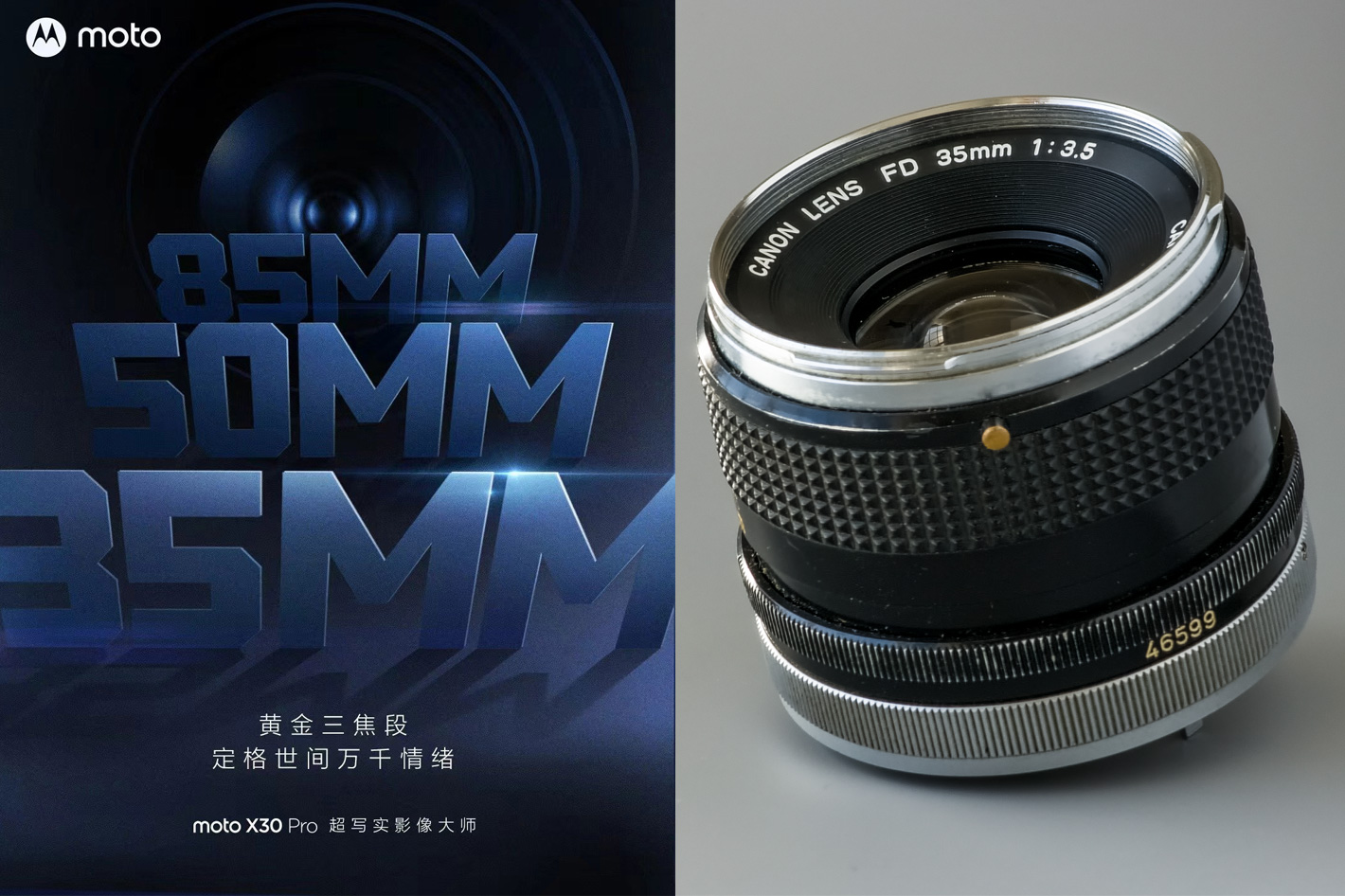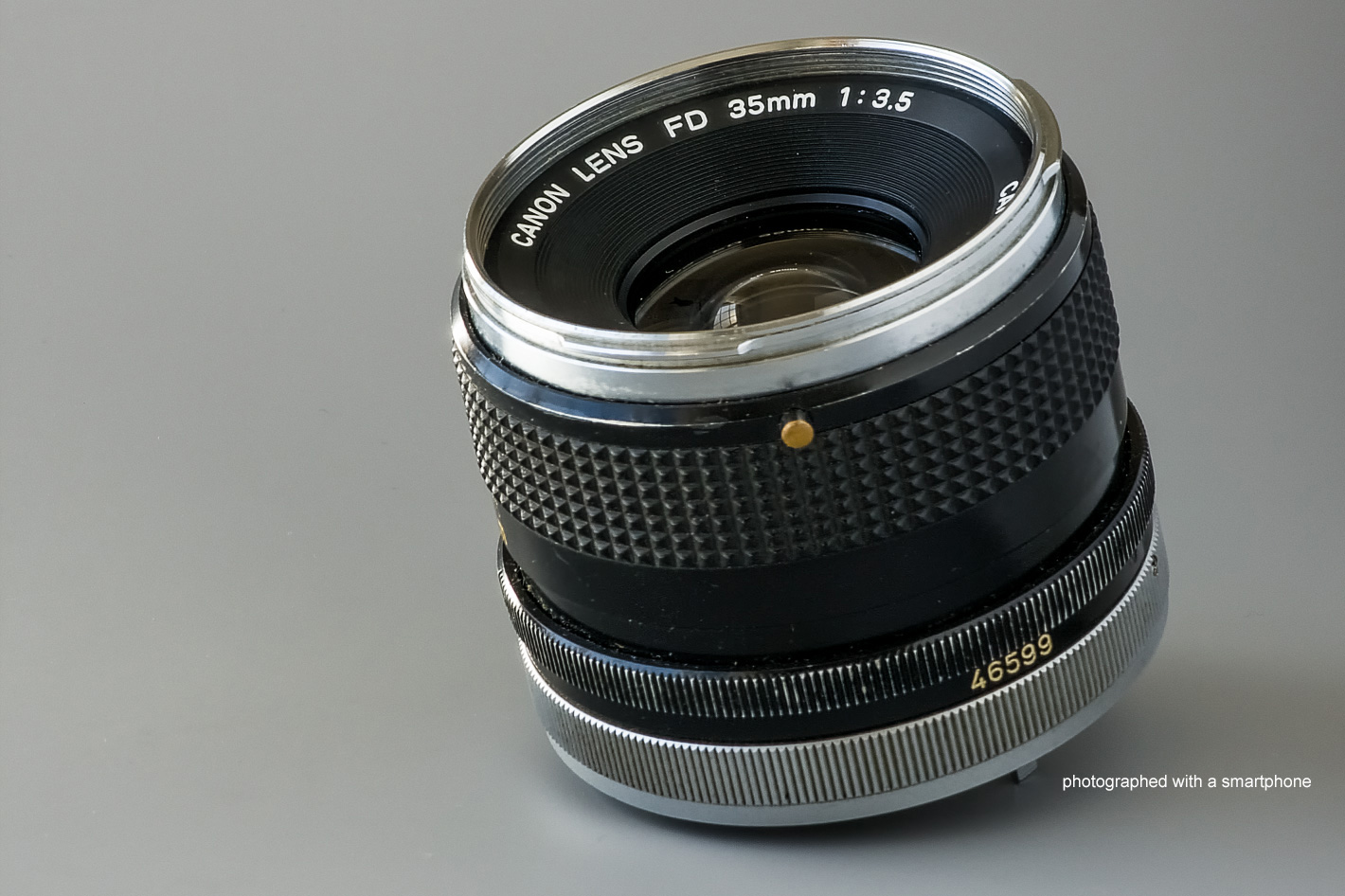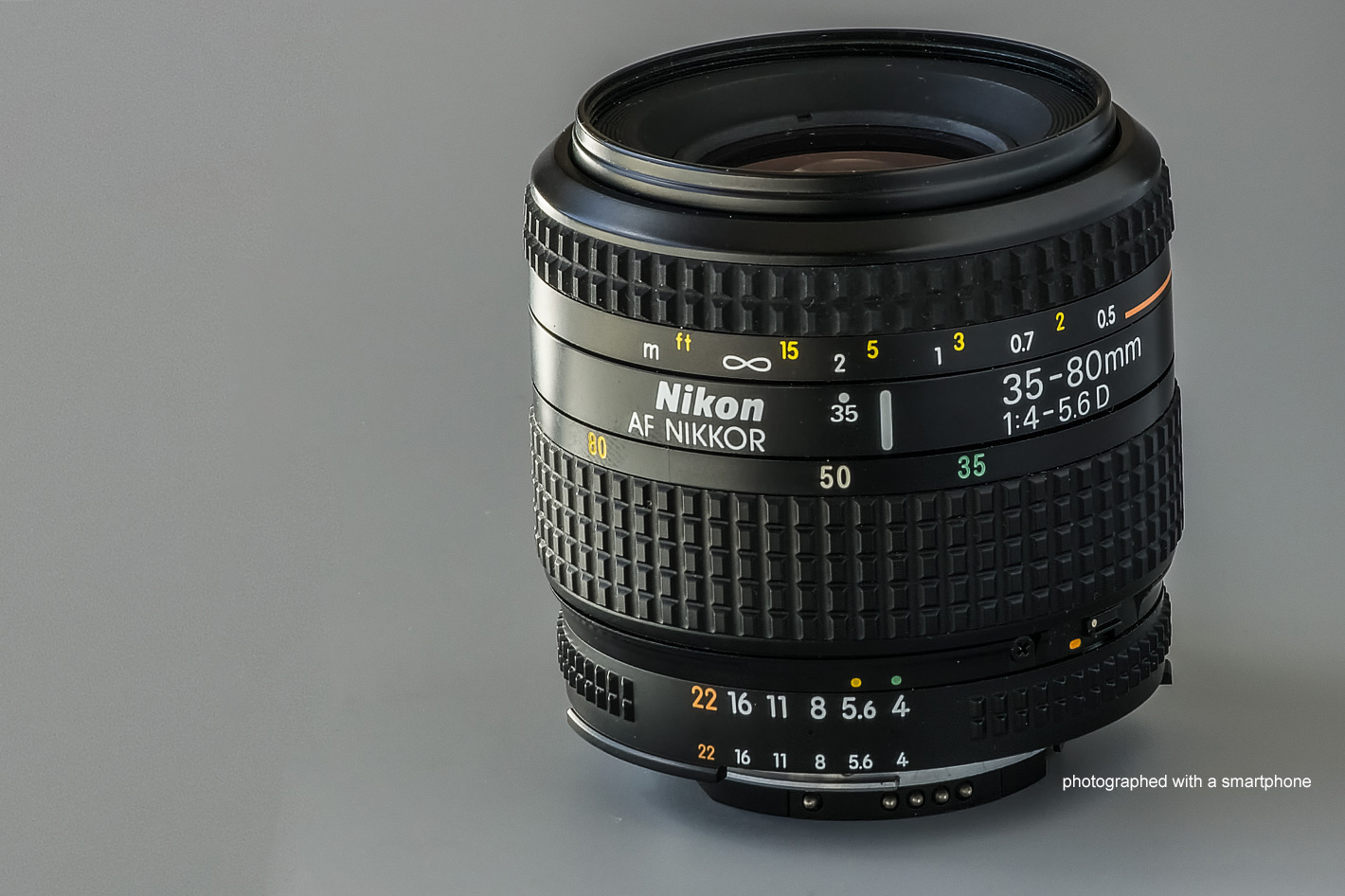
After the ZTE Axon 40 Ultra smartphone introduced focal lengths of 16 (ultra-wide angle), 35 (main camera) and 91mm (telephoto), the Motorola model (which will be the Moto X30 Pro in China and Moto Edge 30 Ultra, or Frontier, in global markets) features three focal lengths that would satisfy the needs of many photographers: a 35mm, a 50 and an 85mm. Although these values may surprise those only photographing with smartphones, photographers coming from conventional 35mm format cameras will be pleased to know that these focal lengths, which were – and still are – a staple element of photography are making their way inside smartphones, instead of the usual 12, 24 and whatever value smartphone engineers have decided to use until now.

Professional photographers, especially photojournalists, adopted the 35mm, which was ideal for covering everything, allowing to fit more information inside the frame, without going overboard with distortion. One example is the Canon FD 35mm f/3.5 – shown in a photo here -, which is usually attached to an old Canon FTb QL I still have – and is still working if you feed it a 35mm film – is an example of a classic 35mm lens, and one I used for many years. My other 35mm lens, which was attached to a battered black Canon A-1, vanished when the camera was stolen…


The 35mm was also a good lens for landscape, at least until the 28mm arrived, followed by the 24mm, with better optics and less distortion than earlier examples. Suddenly there was a lot to choose from, starting with even wider focal lengths, but common kits for many photographers would include a 35, a 50 and a telephoto, anywhere between 80 and 135mm, considered ideal for portraits and bringing distant subjects closer.
As the technology evolved, better zooms were designed and adopted by photographers. Photojournalists settled for the classic 28-70mm f/2.8 versions from varied brands – paired with a 70-200mm f/2.8 – meaning they could cover practically anything with just two lenses. As optical systems became better, anything, from fish-eye to extreme long telephotos was introduced, allowing distinct types of photographers and filmmakers to better express themselves. Suddenly, zooms with focal length ranges as 10-20mm or 17-40mm became common, with long 100-400mm or 150-600mm on the other end, meaning everyone could frame their subjects as they intended… without the need to carry multiple prime lenses around.
Smartphones have not yet made zooms a regular part of their features, despite some promises from Oppo (an 85-200mm optical zoom announced in 2021…) and other brands. The first true optical telephoto zoom in a smartphone appeared, last May, in the Sony Xperia 1 IV, which features a humble 85-125mm focal length variation, covering values usually associated with portrait lenses. It’s a start for something we expect to see developing in the coming months.
While there will always be some outliers regarding the new trend – the upcoming Xiaomi 12 S Ultra will have a “conventional” 24mm main camera, with a 12mm ultra wide-angle module and a 120mm telephoto –, as there are in conventional photography (one example being the EF 35–350mm f/3.5–5.6L USM from Canon, introduced in 1993), the fact that some smartphone brands are starting to offer focal lengths from 35mm to 85mm suggests that smartphone photography may be on the path to mimic, more closer, what the 35mm format offers, at least within the limits imposed by size of the mobile devices and the difficult in designing lenses.
The choice made by ZTE and Motorola may indicate that the industry is moving closer to “conventional” photography. As users become more interested in photography, they may be willing to trade the ultra-wide angle and even the 24mm main camera in most smartphones for a classic 35mm and a true portrait lens, which may help to get better portraits with natural out of focus backgrounds, without the need to use artificial created bokeh, as is practice with smartphones now. Anything from a true optical 80mm onwards may help to make portraits more appealing and less artificial.
While it is difficult to find the ideal set of prime lenses to satisfy the needs from different smartphone users, the values of 35, 50 and 85mm are a good base to start from. For now, we can leave zooms out of the equation, unless they are achievable at affordable prices for most users, but even with primes, there are some combinations smartphone makers can do to offer interesting kits. The Samsung Galaxy S22 Ultra I am using, although featuring a set of focal lengths usual in smartphones, already has two optical telephotos, 70 and 230mm that expand the creative options.
Now, as the industry also seems to be moving towards camera systems that use similar sensors in terms of resolution – triple 50MP in the Xiaomi 12 Pro, triple 64MP in the ZTE Axon 40 Ultra – moving towards focal lengths as those described seems even more promising. As sensors evolve and get more pixels, it becomes viable, even when starting with an 85mm optical lens, to double its focal to 170mm, with digital crop, and still get good images. In some cases, even going all the way up to 250mm, which is about 3x, is within the realm of what’s possible. Maybe this is something that will help many discover the power of telephotos for creative photography and video.
Some will argue that by using a 35mm lens on the main camera and not offering wider focal lengths, like 12mm, the option to create larger landscape images is taken away from users… but that is to forget the advantages of modern photography: you can create a panorama, which is something almost automatic in smartphones. Now, imagine that you’ve the option to create your panoramas with the 50mm camera lens your smartphone has, and you’ll understand – especially if you come from classic photography – there is an entire world of possibilities opening ahead.
Smartphone companies just have to be willing to adapt and we may well be, as some of them promise, at the threshold of a new era for imaging.

